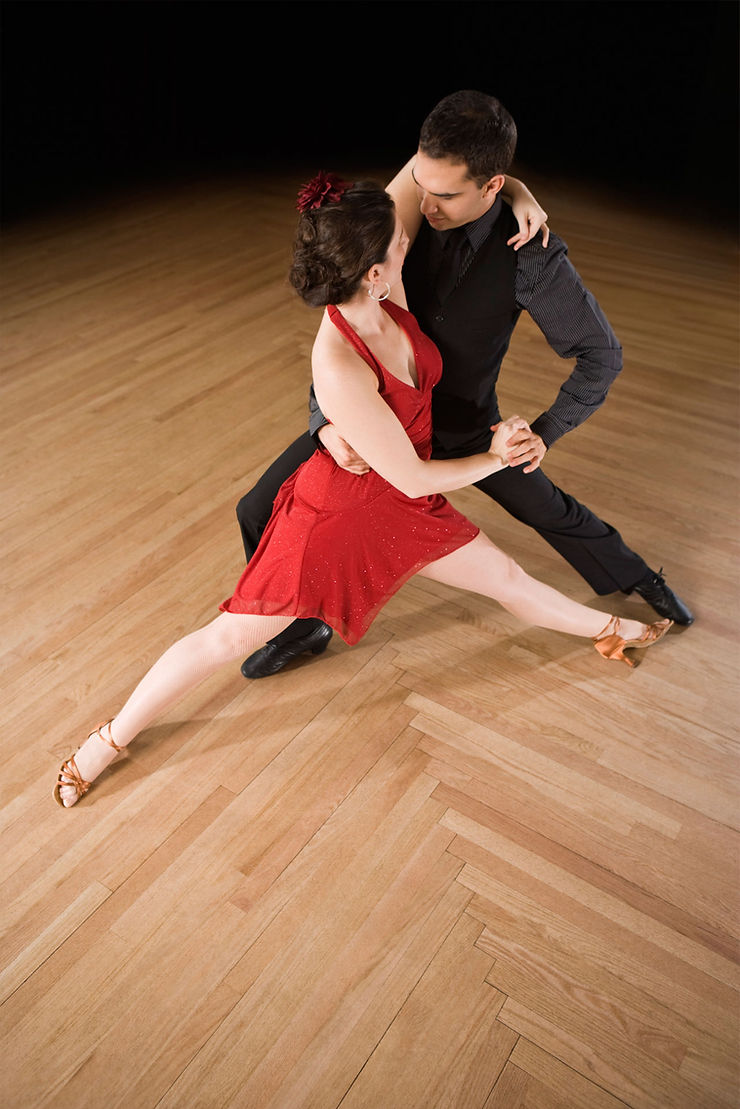
Tips for Better Leading & Following
Updated: Oct 10, 2022
Leading and following are the primary ingredients to partner dancing; couples should be in sync as they move across the floor. Did you know that the conventions of partner dancing originally mirrored the conventions of courting? The Waltz was initially greeted with shock and apprehension by the old-fashioned members of society and was embraced by the young and independent. The close hold put partners in direct physical contact, and the key to dancing gracefully meant that one partner directed the movement and the other interpreted those signals and responded appropriately.
Over time, the leader evolved to be the man, and the follower was the woman. That convention dominated through much of dance history, but no longer applies in every situation. With the growing understanding that strict definitions of leading and following are no longer applicable, the dance community has responded by separating gender from the terms leader and follower. In fact, the more advanced dancers get, the more they see that partners often transfer roles back and forth as they dance. No matter what role a dancer plays, the following is true:
The leader communicates dances patterns through decisive and deliberate movement.
The follower is responsive to the leader’s signals.
4 Tips to be a Great Leader
Be willing to make a bold mistake
Being a good leader has nothing to do with physical strength or number of steps, but is all about clarity and confidence in movement. This means that the less decisive you are, the less likely it is that the average dancer could follow you. Learning one-on-one from a professional if fantastic to fast-track your progress (because they can follow the most subtle of leads), but the best way to push your dancing to the next level is to practice with other dancers. When dancing with someone for the first time, it’s best to start out with basic movements until you get a better idea of your partner’s skill level. Practice parties are a great way to build this skill!
Understand That Subtle Differences Are Advanced
The difference between a basic step and a promenade step is stark and clear; however, the difference between a simple twinkle and a transition into a grapevine is much more subtle by comparison. More advanced movements do require a greater degree of skill to communicate and will take more practice to cement in your muscle memory. When learning these advanced patterns, be patient with yourself – it’s all about repetition!

Posture and Tone are Essential
Standing with good posture, a toned frame, and having your weight committed to a specific foot puts you in the best position to signal your intent to your dance partner. Standing with weight split between both feet, leaning, slouching, or “spaghetti arms” are all wonderful ways to confuse your partner!
Consider Learning to Lead and Follow the Steps
As with most activities, dancing is built around core fundamentals. If you understand the steps from all angles, you’re putting yourself at an advantage on the dance floor. How do you think your instructors learned to dance so well? It’s not easy, but if you have a bit of experience in both aspects of dancing, you’ll do better in the long run!
5 Tips to be a Great Follower
Reduce your reliance on verbal & visual aids
It may be difficult, but try to refrain from asking your partner what step they plan on leading next; this may limit your ability (in the long run) to follow. Sensitivity is developed through physical movement practiced over time. Following is just as much of a skill to build up as leading is – be patient with yourself!
Better Late than Never
A great follower is, by definition, slightly behind the leader. If you didn’t quite feel his lead, there’s a chance it was because you didn’t wait long enough. Of course, your leader may be timid -that’s how every leader starts! – but being willing to wait longer will not only help your partner improve, but it is what separates average followers from great followers. It’s a skill, and it takes training, just like leading!

Posture and Tone are Essential
Standing with good posture, a toned frame, and having your weight committed to a specific foot puts you in the best position to understand your dance partners signals, even if they may be subtle. Standing with weight split between both feet, leaning, slouching, or “spaghetti arms” are all wonderful ways to get confused or throw off your partner!
Know the Basic Rhythms & Patterns
Dancers that have internalized the rhythm of a particular dance are in a much better position to follow a new partner. For example, if you are dancing the Waltz, even if you don’t know what movements your partner will lead, you should know that you will always step on “1,2,3”, which can be a great way to fix mistakes or fake your way through an unknown step!
Consider Learning to Lead and Follow the Steps
As with most activities, dancing is built around core fundamentals. If you understand the steps from all angles, you’re putting yourself at an advantage on the dance floor. How do you think your instructors learned to dance so well?

Other Ways Of Thinking About Lead and Follow
Sports: Offense and Defense
Offense: They need to be decisive, communicate the plays, and have quick decision-making skills.
Defense: The job of the defense is to be as reactive as possible. They cannot predict which direction the play is going to go, but they can prepare themselves to read and react to the direction of the play.
Conversation: Speaking and Listening
Speaking: Leaders need to be clear and concise. If their speech is mumbled or doesn’t follow a particular train of thought, the listener is lost!
Listening: A follower is an expert listener. They don’t predict the outcome of the conversation, they take it all in, wait, and respond. In dancing, the role of leader and follower becomes more interchangeable the more advanced you get!
To Sum it All Up
The most essential ingredient for Ballroom and Latin dancing is, without question, the communication between partners – it ranks higher than technique, styling, or musicality. The real trick is understanding how to get your body to do it automatically (here’s a hint: practice, practice practice)!
There are countless dance steps out there, but the true meat and potatoes of dancing are the subtle things like leading and following. To truly learn to dance – the right way – work with a professional. At In Motion Ballroom, each of our professional dance instructors are trained to teach you how to lead and follow on the dance floor in a fun way that is customized to your needs.
Ready to get started? Call us today!
>>>>>>561.851.4808




